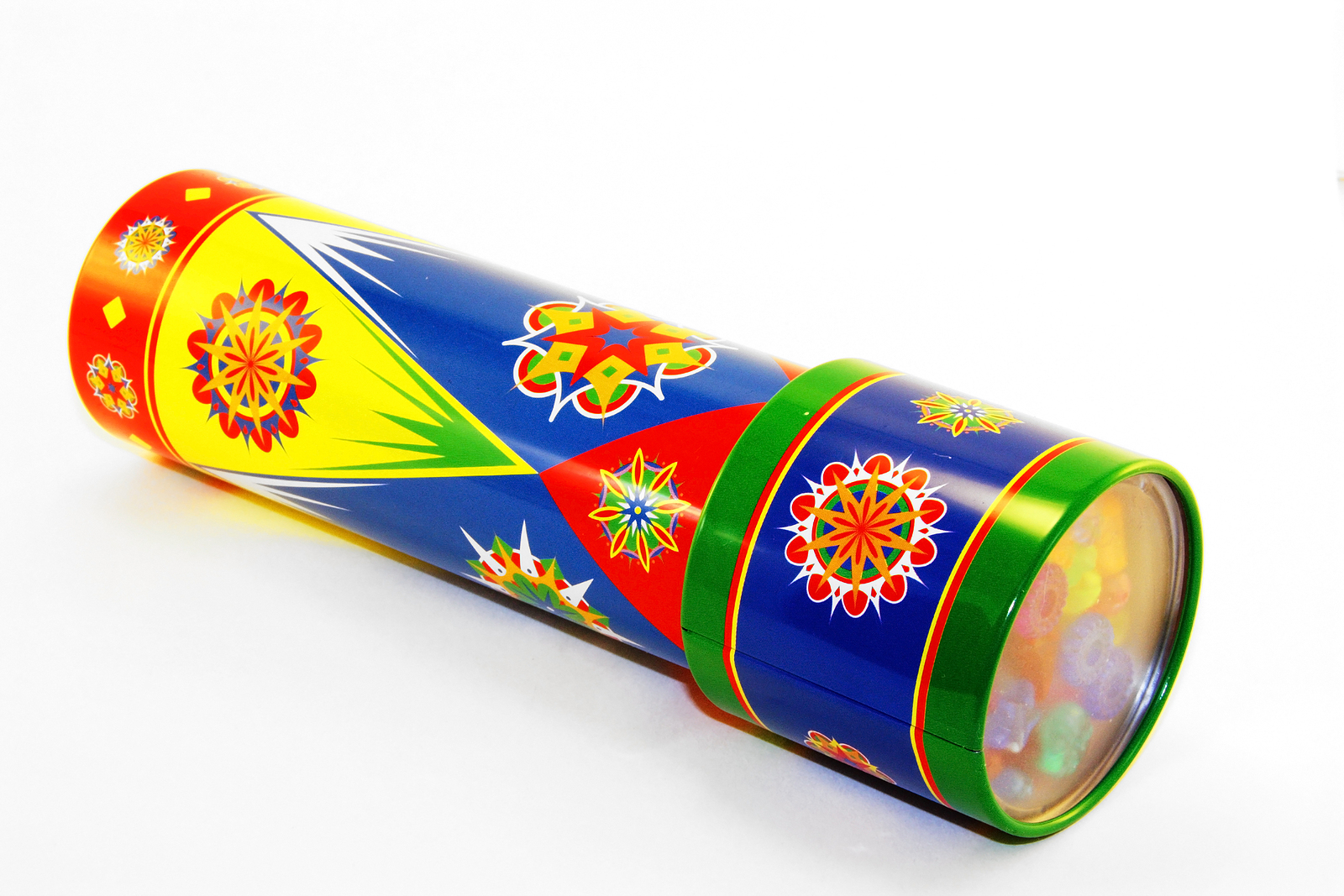Let me take you back to my childhood living room. Picture it with me: a couch, a love seat, a floor model television, a console table, and a lamp or two. Typical furniture items, typical colors, typical living room. However, one thing sticks out that wasn’t so typical. Sitting on the console table shelf was a kaleidoscope. I’m not sure where my mom purchased it (or why) but I loved it. I’d often pick it up from its stand, carefully place it to my eye, and slowly turn the end. Constantly finding myself in wonder and awe at the changing colors and designs, I also remember thinking, how does this work, is it magic? Now that years have gone by, I’ve learned it’s not magic at all but still very interesting.
Kaleidoscope Components
Kaleidoscopes bring together a combination of simple mirrors, angles, and objects in a scientific way. No magic, no mystery. At one end of the tube is an eye piece, at the other end is an end cap. Inside this, there are two or three mirrors (or reflective surfaces) positioned at specific angles to each other. This alignment creates a V-shape or a triangle. Most kaleidoscopes have everyday objects objects between the mirrors: glass pieces, ribbon, confetti, glitter, feathers, flower, beads, and buttons. These objects in thin, round boxes (made of transparent material like glass or plastic) called cells, which are just large enough for the items to freely move. Seems simple enough but where is the science?
Kaleidoscope Science
The science comes when light enters the kaleidoscope tube and travels in a straight line. However, when it bumps into something, it changes direction. This is called reflection. When light coming into a kaleidoscope hits the mirrors, it reflects back in the direction from which it came. When light hits the objects inside the kaleidoscopes, it reflects toward the mirror, resulting in constant reflection and redirection within the tube. Think of it as a laser light show only the colors, shapes, designs and patterns of the show are determined by the objects within the kaleidoscope.
Kaleidoscope Fun
Since the objects move freely within the kaleidoscope tube, the reflection of light against the objects inside the kaleidoscope can not replicated. This means you will never see the same pattern or design in a kaleidoscope twice. So, next time you find yourself looking through the eye piece of a kaleidoscope, move slowly, soak up the beauty, and find the wonder and awe in it! Also, check out PMG’s blog for more interesting and intriguing How It’s Made articles.
Kim Mooney, Technical Manager & Coach








